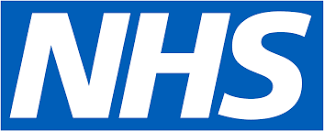Self Treatment of Common Illness
Many conditions get better on their own and can be treated successfully at home. Your pharmacist may be able to offer advice about these remedies available of the counter without a prescription.
Temperature
A high temperature occurs commonly even with mild infections. In small children it is important to stop the temperature from rising too quickly and they should be given paracetamol syrup which may be bought from the chemist. If they still appear hot, they should be sponged all over with tepid water (not cold) to cool them. If after the above treamtent your child still appears to be unwell you should consult your doctor. A child or adult with a tempature will not come to any harm being brought to the Surgery.
Colds & Flu
Usual symptoms are a runny nose, cough, tempature, aches and pains. Viruses cause them, and antibiotics are of no help in their treatment. Regular paracetamol at recommended doses will help you the temperature and the aches and pains and it is a good idea to drink plenty of fluids. The temperature usually steeles within a few days and the other symptons then gradually subside.
Diarrhoea & Vomiting
This results from an infection of the stomach/bowel. The condition usually gets better on its own within one or two days. Treament consists of replacing lost fluids with frequent small drinks of water or other non-milk containing liquids. If there is severe pain or blood with the diarrhoea contact the doctor. Diarrhoea and vomiting in babies, young children, the elderly and those with other medical conditions, should be treated with caution and agian, seek advice from the doctor.
Head Lice
Head lice may affect anyone and are not a sign of poor hygiene. Treat all confirmed infections with insecticidal lotion or liquid. Shampoo, conditioner and combing when wet equally effective.
Chicken Pox
On the first day a rash appears with small red spots which develop small blisters in the centre, within a few hours. During the next 3-4 days further spots will appear and the earlier ones will turn crusty and fall off. Calamine lotion may be applied to help the itching. The most infectious period is 2 or 3 days before the rash appears and until the last spots have formed dry centres, usually 7-10 days after the rash started. Children may return to school as soon as the last crusts have fallen off.
German Meales (Rubella)
The rash appears on the first day of the illness and consists of small red spots covering the body, arms and legs. The rash does not itch. Other symptons may include a slight cold and aching joints. Other symptoms may include a slight cold and aching joints. It is infectious from 2 days before the rash appears until the rash disappears in 4-5 days. This illness is only dangerous for unborn babies. It is important to avaoid pregnant women who are not immune to German Measles (Rubella).
Measles
The rash is blotchy and red and appears on the face and body about the 4th day of feeling unwell. It is often accompanied by a cough and redness of the eyes. It is most infectious from 2-3 days before the rash appears until 8-10 days afterwards.
This illness can be prevented by immunisation.
Mumps
The symptoms are swollen face and neck, slight fever and they amy also complain of a dry mouth, chewing and swallowing may be uncomfortable. It is infectious a few days before the swelling should go down in about 10 days.
This illness can be prevented by immunisation
